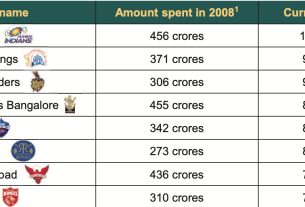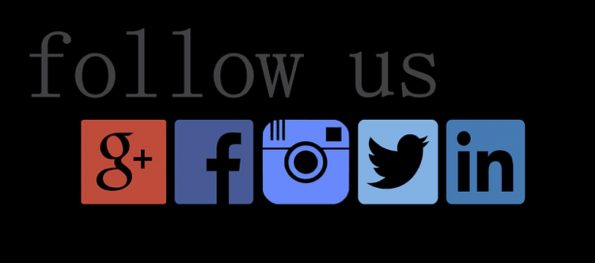[ad_1]
This article first appeared in West Point’s Modern War Institute. ![]()
We just completed the fourth week of our new national security class at Stanford – Technology, Innovation and Great Power Competition. Joe Felter, Raj Shah and I designed the class to cover how technology will shape all the elements of national power (America’s influence and footprint on the world stage).
In class 1, we learned that national power is the combination of a country’s diplomacy (soft power and alliances), information / intelligence, military power, economic strength, finance, intelligence, and law enforcement. This “whole government approach” is known by the acronym DIME-FIL. And after two decades focused on counter terrorism, the US is now engaged in great power competition with both China and Russia.
In class 2 the class focused on China, the US’s primary great power competitor. China is using all elements of national power: diplomacy (soft power, alliances, coercion), information / intelligence (using its economic leverage over Hollywood, controlling the Covid narrative), its military might and economic strength (Belt and Road Initiative) as well as exploiting Western finance and technology. China’s goal is to challenge and overturn the US-led liberal international order and replace it with a neo-totalitarian model.
The third class focused on Russia, which is asserting itself as a great power challenger. We learned how Russia pursues security and economic interests in parallel with its ideological aims. At times, these objectives complement each other. At other times they clash, Putin’s desire to restore Russia into a great power once again leads to a foreign policy that is opposite the interests of the Russian people. As Putin himself has said, “The collapse of the Soviet Union was a major geopolitical disaster of the century,” and that quote offers a window to his worldview as he tries to remake Russia into a great power once again. “
Having covered the elements of national power (DIME-FIL) and China and Russia, the class now shifts to the impact commercial technologies have on DIME-FIL. Today’s topic – Semiconductors.
Catch up with the class by reading our intro to the class, and summaries of Classes 1, 2 and 3.

Class 4 Required Readings:
Silicon Valley, the Military, and the Journey to the Fourth Industrial Revolution
Moore’s Law & the Global Semiconductor Industry
- Lee Bell, “What is Moore’s Law? WIRED Explains the Theory that Defined the Tech Industry ” WIRED, Aug. 28, 2016.
- INTERACTIVE CHART “Average Cost of Hard Drive Storage per Gigabyte 1980-2014” Human Progress.
- Steve Blank, Chip Industry Tutorial Stanford Gordian Knot Center for National Security InnovationSeptember 2021.
- Semiconductors: Technology and Market Primer 10.0 Oppenheimer, Dec. 7, 2017
- James Timbie, National Security Supply Chain Resilience The Hoover InstitutionFeb 5, 2021.
- Yan Nee Lee, “2 Charts Show how Much the World Depends on Taiwan for Semiconductors” CNBC, Mar. 15, 2021.
- Karen M. Sutter, China’s New Semiconductor Policies: Issues for Congress Congressional Research Service, Apr. 20, 2021.
- Video: The US Military’s Semiconductor Buying Problem, Asianometry
Semiconductor Case Study
Reading Assignment Questions:
Pick one of the below questions and answer in approximately 100 words, based on the required readings. Please note that this assignment will be graded and count towards course participation.
- Describe the roles of Fred Terman, William Shockley, and Fairchild Semiconductor in the genesis of Silicon Valley. Who had a greater role in creating Silicon Valley, Fred Terman or the Traitorous Eight?
- How would you characterize China’s attempt to catch-up in the semiconductor industry? Do you think China can credibly catch TSMC (without an invasion of Taiwan)? Why or why not?
Discussion Questions
- Put yourself in the shoes of Mark Liu, chairman of TSMC: Do you view China as more of a competitor or customer – and why?
- Now imagine you are the NSC Senior Director with responsibility for technology strategy. What’s the first thing the US Gov’t should do regarding semiconductors?
Class 4: Guest Speaker
Our guest speaker for our fourth class was John Hurley, former Member of the President’s Intelligence Advisory Board, an expert on semiconductors and supply chains, and former Captain, US Army.
Lecture 4
If you can’t see the slides, click here
Slide 4. The critical role of semiconductors in great power competition. Both our commercial and military systems are dependent on semiconductors. China spends more on semiconductor imports than it does on oil. We framed the advances in technology as part of the 4th industrial revolution. Slides 5-7. We reminded the students of the role the DoD and IC played at Stanford turning it into an outward-facing university, which kick-started technology entrepreneurship here in Silicon Valley.

Slides 9-11 Dual-use technology. For the first time in 75 years, federal labs and our prime contractors are no longer leading innovation in many critical technologies including AI, machine learning, autonomy, biotech, commercial access to space, etc. Rapid advances in these areas are now happening via commercial firms – many in China. This is a radical change in where advanced technology comes from. In the US, the government is painfully learning how to reorient its requirements and acquisition process to buy these commercial, off-the-shelf technologies. (Products that are sold commercially and to the DoD are called “dual-use.”)
Slide 15. Semiconductor industry. We began a deep dive into semiconductors by drawing the map of the semiconductor industry (Slides 3-15 from this required reading.) Five companies provide the majority of the wafer fab equipment needed to make chips. TSMC is the leading fab for manufacturing logic chips. (Slides 32-33 from this required reading.) Of the 29 new fabs starting construction in 2021-22, over half are in China and Taiwan.
 Slide 16. TSMC Case. We took the class through the TSMC case study and mapped out the roles and interests of TSMC, China, Intel, and the US Slides 17-18. We discussed China’s drive for semiconductor independence, US export controls on Huawei (why and its consequences,) the various constituencies of a US semiconductor policy (Commerce Department, DoD, US chip makers, US semi equipment suppliers, etc.), whether TSMC’s success makes Taiwan more or less secure, given China’s goals of reunification with Taiwan.
Slide 16. TSMC Case. We took the class through the TSMC case study and mapped out the roles and interests of TSMC, China, Intel, and the US Slides 17-18. We discussed China’s drive for semiconductor independence, US export controls on Huawei (why and its consequences,) the various constituencies of a US semiconductor policy (Commerce Department, DoD, US chip makers, US semi equipment suppliers, etc.), whether TSMC’s success makes Taiwan more or less secure, given China’s goals of reunification with Taiwan.
Slide 19-20. Policy. How do decision makers formulate policy? Does it start by asking “What problem do we want to solve?” Using semiconductors as an example, is it China’s access to US technology? Or is it China embedding this advanced US-designed technology into their military systems? Or what happens to TSMC and Western access to advanced technology if China quarantines or invades Taiwan?
How do policy makers select and narrow a problem? Is it based on the value the policy adds for identified stakeholders? Is it a personal passion / interest? Specifically for China and semiconductors, what are potential solution ideas? Export controls? Stronger CFIUS regulations? How do you take into account stakeholder feedback (DoD, Commerce Department, commercial firms)? And once you create a policy, how do you effectively implement it?
Slide 21 -23. Class midterm assignment: Assume you’re a policy maker. Write a 2,000-word policy memo that describes how a US competitor is using a specific technology (semiconductors, AI, autonomy, cyber, etc.) to counter US interests. Propose how the US should respond.
Slides 25- 32 Group Projects. We had several teams talk about their learnings from their out-of-the-building interviews. Team ShortCircuit (Slide 29) is working on how the US should improve its ability to design and produce semiconductors, and develop and retain relevant talent. They heard from a professor that the ratio of Stanford students taking software versus hardware courses was 10-to-1 software, a complete reversal from decades ago. We discussed whether 1) that was true or just anecdotal 2) if true, was it the same in other research universities, 3) why it happened (software startups are getting funded at obscene valuations)? 4) and what kind of incentives and policies would be needed to change that, and 5) where in the value chain those might be most effective (students, venture capitalists, government, etc.)
Next week: Artificial Intelligence / Machine Learning
Lessons Learned
- Semiconductors are the oil of the 21st All economies run on them.
- Semiconductors are China’s biggest imports
- China’s roadmap for building an indigenous semiconductor industry and accelerating chip manufacturing is the National Integrated Circuit Plan
- The goal is to meet its local chip demand by 2030
- The US is dependent on TSMC, located in Taiwan, for its most advanced logic chips
- China claims Taiwan is a province of China
- TSMC will build a fab in Arizona, but it will represent only 2% of its capacity
- What are US policy makers’ options?

11/02/2021 Technology, Innovation, and Great Power Competition – Class 4 – Semiconductors
Filed under: Teaching, Technology Innovation and Modern War and Great Power Competition |
[ad_2]
Source link


